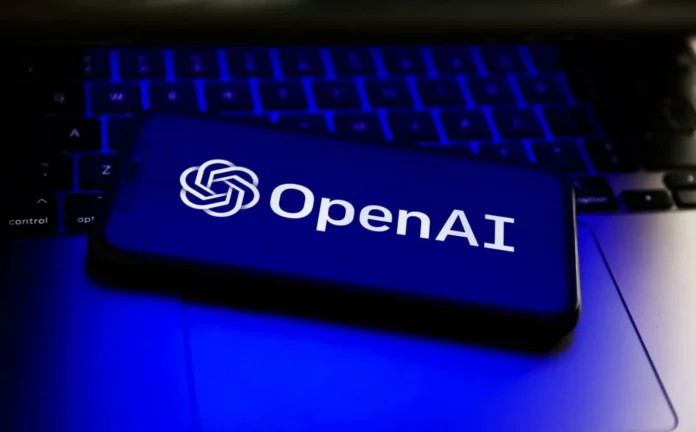OpenAI O3 and O4-Mini AI Models Set New Standards in Deep Reasoning and Tool Use
OpenAI, the trailblazer in generative AI, has introduced two groundbreaking AI models, named o3 and o4-mini, redefining what artificial intelligence can do. These models are not only capable of deeper reasoning but also bring enhanced image understanding and tool usage capabilities, positioning them among the most advanced AI systems to date.
This major release reflects OpenAI’s ongoing commitment to pushing the boundaries of what AI can achieve, particularly in real-world application domains like problem-solving, research, and multimodal content generation.
What Are the O3 and O4-Mini Models?
Unlike the traditional naming convention that focused on “GPT” versions like GPT-3.5 or GPT-4, OpenAI has started rolling out models with codenames such as o3 and o4-mini. These models are part of a new wave in OpenAI’s model development strategy, emphasizing specialization, efficiency, and capability layering.
- O3 is believed to be one of the latest high-performance models undergoing internal testing for a possible future upgrade to GPT-4 or GPT-5 class systems.
- O4-Mini, on the other hand, appears to be a lighter, more efficient variant—designed to offer solid performance with reduced computational costs, ideal for scaling across various applications.
These names were first spotted in OpenAI’s official developer tools and API playground, sparking excitement across the AI community.
Key Features of O3 and O4-Mini
1. Deeper Reasoning Abilities
Both models exhibit improved contextual understanding, allowing them to think and respond more like humans. This includes:
- Better long-form answers that stay on topic
- Increased logical coherence in problem-solving
- Improved few-shot learning, where the model can infer rules from minimal examples
This is particularly useful in areas such as research assistance, legal document review, and academic writing.
2. Advanced Image Analysis
OpenAI continues its push into multimodal AI, and o3/o4-mini bring impressive capabilities in image interpretation:
- Read and understand complex charts and graphs
- Describe scenes and objects in high detail
- Extract text from images with near-human accuracy
For example, you can upload a photo of a handwritten note or a busy street scene, and the models can summarize its content or answer specific questions about it.
3. Tool Use and Agent-Like Behavior
One of the most exciting aspects of o3 and o4-mini is their ability to use tools, similar to how humans might consult a calculator or search engine.
These models can:
- Call external APIs to fetch real-time data
- Execute code in sandboxes to solve technical problems
- Search the web for current events when integrated with browsing tools
This paves the way for autonomous AI agents that can reason, plan, and execute tasks across multiple steps.
How These Models Compare to GPT-4
While OpenAI has not officially detailed the performance metrics, early users and developers report that o3 may even outperform GPT-4-turbo in tasks requiring deeper understanding and cross-referencing.
Meanwhile, o4-mini is shaping up to be a compact powerhouse, ideal for applications needing fast inference and lower resource demands without sacrificing too much on intelligence.
Key differences:
| Feature | GPT-4 | O3 | O4-Mini |
|---|---|---|---|
| Reasoning | High | Higher | Moderate |
| Image Understanding | Limited | Advanced | Good |
| Tool Use | Available | Enhanced | Available |
| Speed | Moderate | Optimized | High |
| Cost Efficiency | Moderate | TBD | High |
Implications for Developers and Businesses
With OpenAI opening access to these models via its API and ChatGPT platform, developers now have powerful new tools at their disposal. From chatbots that can view and understand photos to AI agents that can handle real-time data, the use cases are nearly limitless.
Industries that will immediately benefit include:
- Healthcare: interpreting radiology scans, summarizing patient records
- Finance: analyzing charts, forecasting trends
- Education: visual-based tutoring, smart feedback on assignments
- Customer service: intelligent multimodal chat interfaces
Privacy and Ethical Considerations
As always, OpenAI remains under the public eye when it comes to privacy and safe AI deployment. These new models come with reinforced guardrails to reduce hallucinations, bias, and misuse.
The company is also expanding transparency efforts, encouraging external audits and research partnerships to understand how these models behave in real-world environments.
What’s Next for OpenAI?
The launch of o3 and o4-mini appears to be just the beginning. Rumors suggest that OpenAI’s GPT-5 may follow this new naming structure and could incorporate even more advanced features like:
- Video understanding
- 3D spatial reasoning
- Full memory integration for persistent agents
Moreover, OpenAI CEO Sam Altman has hinted that future releases will focus on building AI agents that can act autonomously, sparking the next revolution in human-AI collaboration.
Conclusion
OpenAI’s o3 and o4-mini models mark a significant leap forward in artificial intelligence. With deeper reasoning, image processing, and tool-using abilities, these models are bridging the gap between passive response generation and active AI engagement.
For developers, researchers, and businesses, the message is clear: the next generation of AI is here—and it’s more capable, versatile, and intelligent than ever before.



